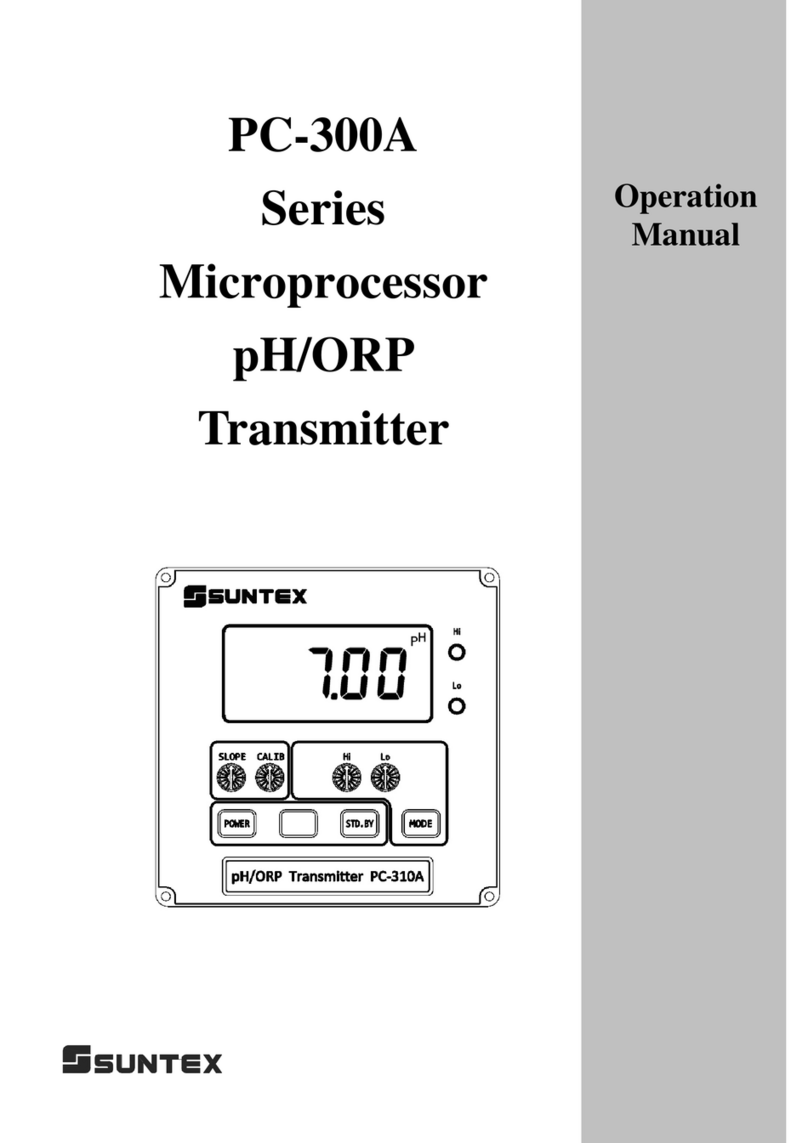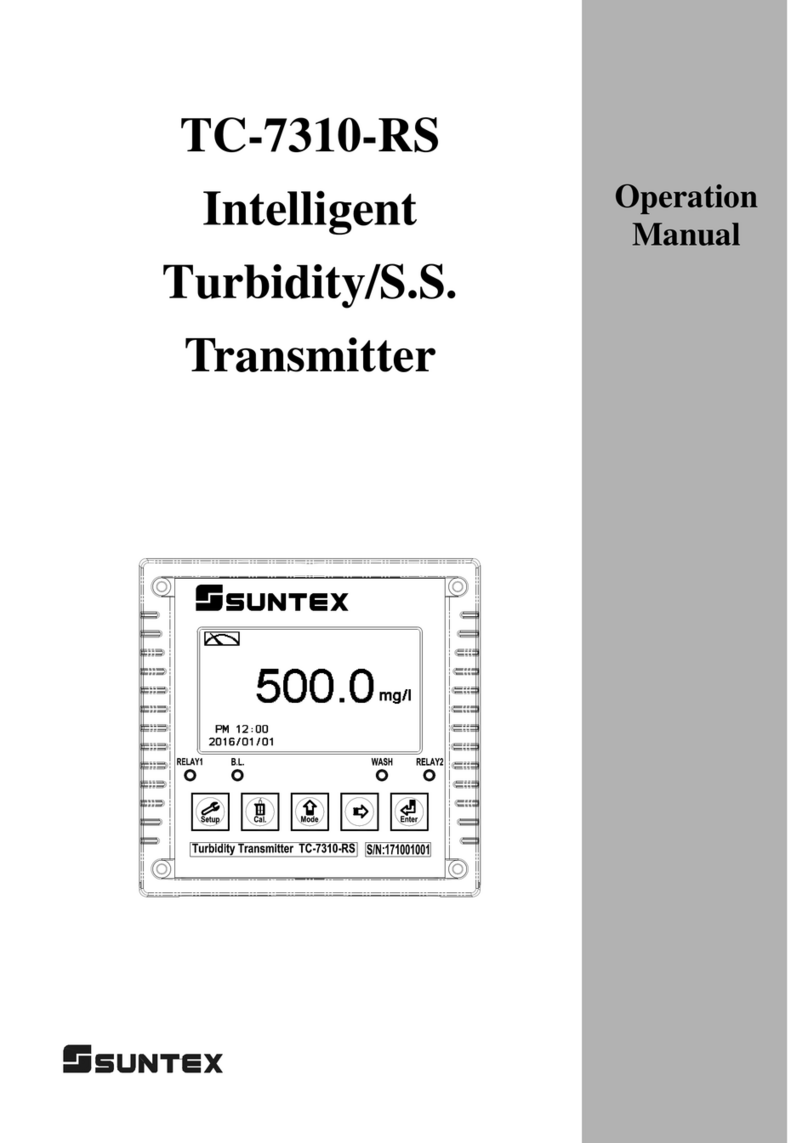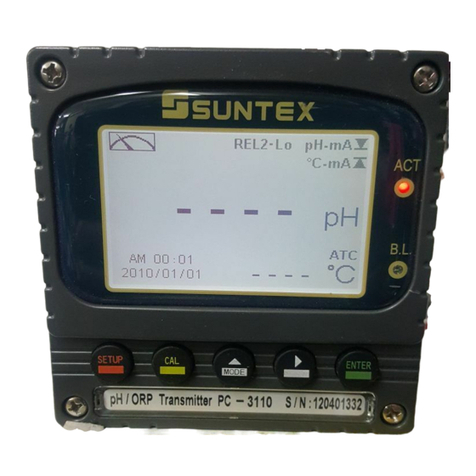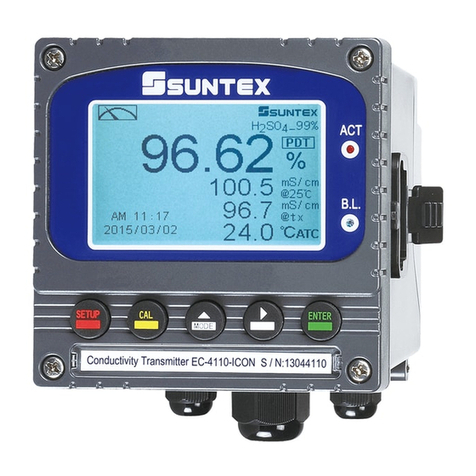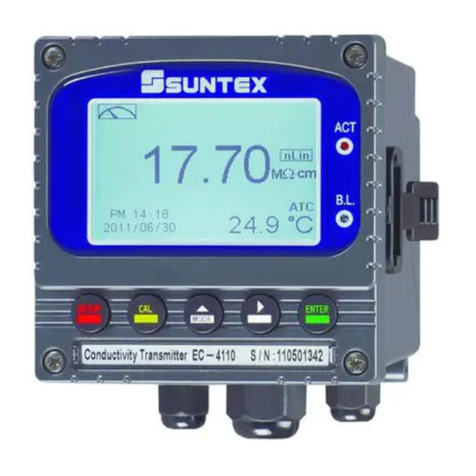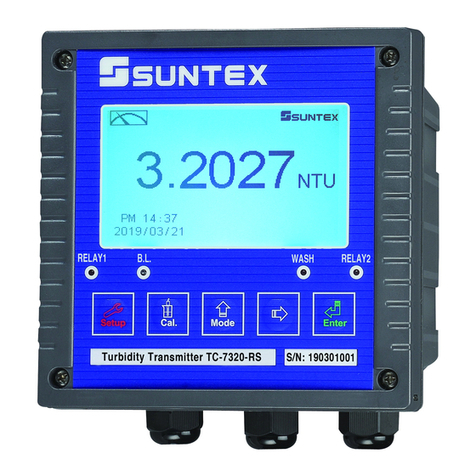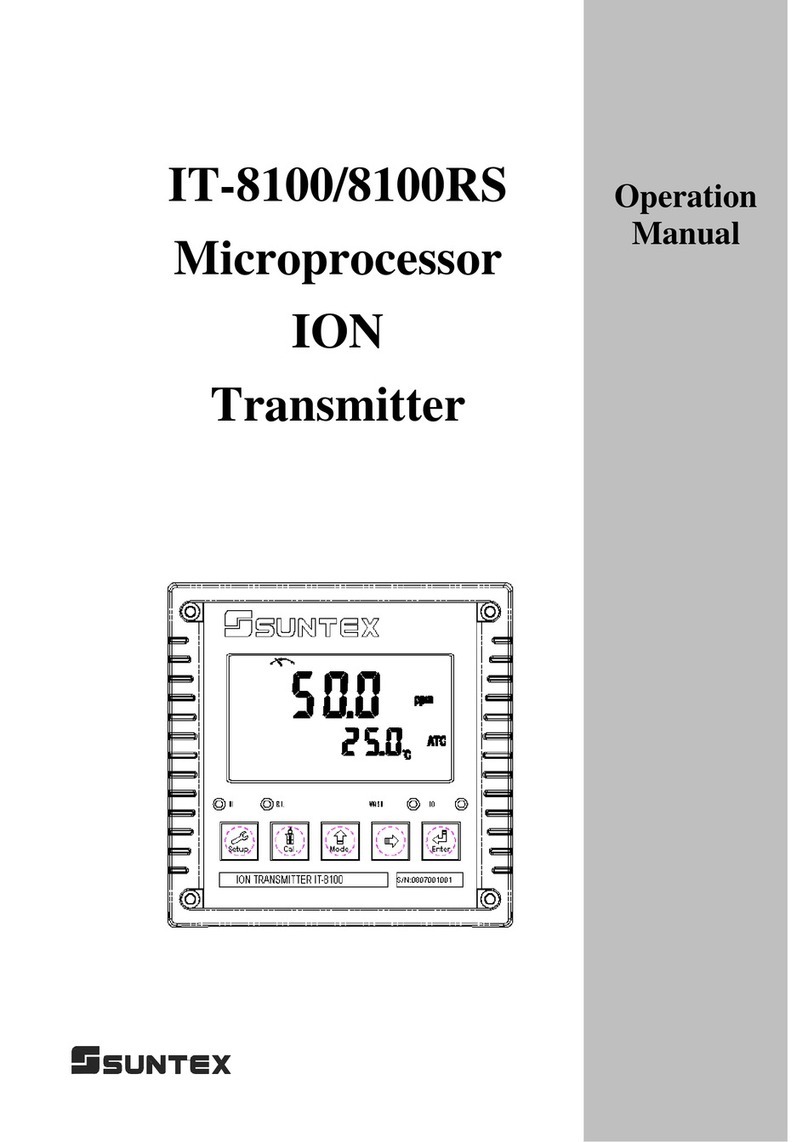
1.Specifications
1.1 Specifications
Main specifications:
CT-6110-POL (Non-reagent type free chlorine transmitter)
Measuring mode Residual(Free) Chlorine & pH / Temperature, Simultaneous display
Measuring
range
Free Cl20.00~3.00mg/l (Free Cl2corresponding range adjustable for graphical display)
pH -2.00~16.00pH
Temp 0.0~60.0C
Resolution
Free Cl20.01mg/l
pH 0.01pH
Temp 0.1C
pH compensation/
accuracy pH sensor auto compensation/ manual compensation/ OFF / ±0.01pH(±1 digit)
Temp. compensation/
accuracy NTC-30K(compensation range: 0~45C)/ ±0.2C (±1 digit)
Display Large LCM with sensitization sensor for auto/manual illumination function and
contract function
Display mode
Text mode: Numerical display
Chart mode: 3 mins real-time dynamic graph
(Free Cl2corresponding range adjustable)
Trace mode: Set up from 3 mins to 4 weeks duration of the measured value trend graph
(Free Cl2corresponding range adjustable)
Analog output Isolated DC 0/4~20mA corresponding to Free Cl2or pH, max. load 500
Voltage output DC ± 12V, 1W max. for PH-300T(Optional)
Logbook 50 event records
Serial interface Isolated RS-485(Modbus RTU or ASCII)
Setting Contact 240VAC, 0.5A Max. (recommended)
Activate Two individual Free Cl2or pH, Hi/Lo selectable, limited programmable
Clean/Auto Zero 240VAC, 0.5A Max. (recommended),
ON:0~99 min. 59 sec. OFF:0~999 hours 59 min.
Cl2
calibrati
on
Zero point Electrodeopencircuit
or apply activated charcoal filtered water (residual chlorine free water) / pure water
Span Sampling DPD measurement input calibration or standard buffer calibration
pH calibration Any, Tech & NIST buffer calibration
Diagnostic function Temperature sensor, zero-point & slope diagnosis, water/power outage,
logbook record or alarm symbol
Measurement system
Measuring principle Polarographic (No reagent needed for measurement)
Residual chlorine
electrode
2 in 1 rotating electrode (Working electrode: gold, Counter electrode: silver)
With relative slope index for electrode aging determination
Temperature probe NTC-30K
pH electrode Optional(No need for pH compensation when pH range within pH 6.5~7.5)
Cl2 electrode cleaning Ceramic beads auto cleaning
Motor protection Auto over heat protection
Water outage/
Electrode open
diagnosis
When water outage or electrode open, after auto diagnosis the motor auto shuts down
